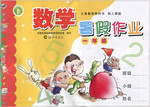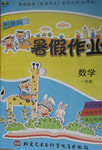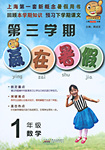题目内容
2.The newspaper must provide for the reader the facts,pure,unprejudiced,objectively selected facts.But in these days of complex news it must provide more; it must supply interpretation,the meaning of the facts.This is the most important assignment facing American journalists-to make clear to the reader the problems of the day,to make international news understandable as community news,to recognize that there is no longer any such thing as"local"news,because any event in the international area has a local reaction in the financial market,political circles,in terms,indeed,of our very way of life.There is in journalism a widespread view that when you start an interpretation,you are entering dangerous waters,the rushing tides of opinion.This is nonsense.
The opponents of interpretation insist that the writer and the editor shall limit himself to the"facts".This insistence raises two questions.What are the facts?And:Are the bare facts enough?
As for the first question,consider how a so called"factual"story comes about.The reporter collects,say,fifty facts; out of these fifty,his space being necessarily restricted,he selects the ten which he considers most important.This is Judgment Number One.Then he or his editor decides which of these ten facts shall hold the lead of the piece.This is Judgment Number Two.Then the night editor determines whether the article shall be presented on page one,where it has a large influence,or on page twentyfour,where it has little.Judgment Number Three.
Thus in the presentation of a socalled"factual"or"objective"story,at least three judgments are involved.And they are judgments not at all unlike those involved in interpretation,in which reporter and editor,calling upon their research resources,their general background,and their"news neutralism(中立)",arrive at a conclusion as to the significance of the news.
The two areas of judgment,presentation of the news and its interpretation,are both objective rather than subjective processes-as objective,that is,as any human being can be.If an editor is determined to give a prejudiced view of the news,he can do it in other ways and more effectively than by interpretation.He can do it by the selection of those facts that support his particular viewpoint.Or he can do it by the place he gives a story-promoting it to page one or dragging it to page thirty.
61.According to Paragraphs 12,which of the following statements is true?D
A.The most important task of reporters is to provide facts for the readers.
B.If a reporter makes clear the facts he writes,he will get into trouble.
C.In order to make current events clear to the readers,reporters and editors must select facts objectively.
D.For reporters,interpretation of facts is no less important than presentation of the facts.
62.Which of the following can best express the author's attitude toward objectiveness?A
A.He does not think there exists any objectiveness in news writing or reporting.
B.To make clear the news is a way to be objective for the readers.
C.Objectiveness is controlled by editors rather than writers.
D.Properly choosing facts prepares a solid ground for objectiveness.
63.Where a story is presented in a newspaper showsD.
A.the story's factual matter
B.the editor's prejudice
C.the reporter's background
D.the story's impact on the readers
64.The purpose of the last paragraph is toC.
A.show us the author's judgment
B.show us where to place a story
C.show us the author's viewpoint on objectiveness
D.show us how to be neutral.
分析 本文属于记叙文阅读,作者通过这篇文章向我们介绍了报纸必须向读者提供事实,并且向我们说明了新闻界的普遍观点,在新闻报道中我们要遵循客观事实,不要加入自己的主观判断.
解答 61.D 推理判断题,根据第二段There is in journalism a widespread view that when you start an interpretation,you are entering dangerous waters,the rushing tides of opinion.This is nonsense.可以推断出对于记者来说,对事实的解释是没有比陈述事实更重要,故选D.
62.A 细节理解题,根据最后一段The two areas of judgment,presentation of the news and its interpretation,are both objective rather than subjective processes-as objective,that is,as any human being can be.If an editor is determined to give a prejudiced view of the news,he can do it in other ways and more effectively than by interpretation.可知作者认为不存在任何客观的关于新闻或报道的事例,故选A.
63.D 细节理解题,根据倒数第二段Thus in the presentation of a socalled"factual"or"objective"story,at least three judgments are involved.可知报纸上的一个故事说明了这个故事对读者的影响,故选D.
64.C 推理判断题,根据最后一段The two areas of judgment,presentation of the news and its interpretation,are both objective rather than subjective processes-as objective,that is,as any human being can be.可知作者在本段中表明了他的客观观点,故选C.
点评 考查学生的细节理解和推理判断能力.做细节理解题时一定要找到文章中的原句,和题干进行比较,再做出正确选择.在做推理判断题时不要以个人的主观想象代替文章的事实,要根据文章事实进行合乎逻辑的推理判断.

 暑假作业海燕出版社系列答案
暑假作业海燕出版社系列答案 本土教辅赢在暑假高效假期总复习云南科技出版社系列答案
本土教辅赢在暑假高效假期总复习云南科技出版社系列答案 暑假作业北京艺术与科学电子出版社系列答案
暑假作业北京艺术与科学电子出版社系列答案 第三学期赢在暑假系列答案
第三学期赢在暑假系列答案| A. | appreciate | B. | regard | C. | honor | D. | respect |
-____.I only just think she is a bit annoying.That's all.( )
| A. | Yes,I do | B. | No,I don't | ||
| C. | Not exactly | D. | I couldn't agree more |
-Forget it.I know you were out on business.( )
| A. | would have come | B. | should come | C. | could come | D. | must have come |
| A. | told | B. | reminded | C. | warned | D. | advised |